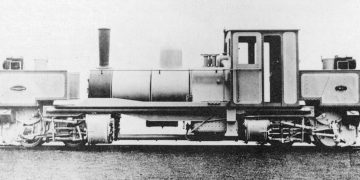In mathematics, the successor function is a fundamental operation that sends a natural number to the next one in the sequence. The function is denoted as SSS, where S(n)=n+1S(n) = n + 1S(n)=n+1. For example, applying the successor function to 111 gives S(1)=2S(1) = 2S(1)=2, and applying it to 222 results in S(2)=3S(2) = 3S(2)=3. This simple operation is one of the essential building blocks in defining more complex mathematical structures, including recursive functions.
Overview of the Successor Function
The successor function is a key concept in the Peano axioms, a formal system that defines the structure of the natural numbers. In this formalism, the successor function is a primitive operation, meaning that it is one of the basic operations used to define other operations on natural numbers, such as addition.
For instance, 1 is defined as S(0)S(0)S(0) (the successor of 0), and addition is defined recursively by: m+0=mm + 0 = mm+0=m m+S(n)=S(m+n)m + S(n) = S(m + n)m+S(n)=S(m+n)
This recursive definition allows for the computation of the addition of any two natural numbers. For example: 5+2=5+S(1)=S(5+1)=S(5+S(0))=S(S(5+0))=S(S(5))=S(6)=75 + 2 = 5 + S(1) = S(5 + 1) = S(5 + S(0)) = S(S(5 + 0)) = S(S(5)) = S(6) = 75+2=5+S(1)=S(5+1)=S(5+S(0))=S(S(5+0))=S(S(5))=S(6)=7
Through this method, the successor function plays a crucial role in constructing addition on natural numbers, as it essentially describes how to “count” forward by one each time.
Successor Function and Set Theory
The successor function also appears in set theory through constructions of natural numbers. For example, the mathematician John von Neumann proposed a construction of the natural numbers within set theory where 0 is defined as the empty set {}\{\}{}, and the successor of a number nnn is the set n∪{n}n \cup \{n\}n∪{n}. According to this construction:
- 0={}0 = \{\}0={} (the empty set),
- S(0)={0}={{}}S(0) = \{0\} = \{\{\}\}S(0)={0}={{}},
- S(S(0))={0,S(0)}={{},{{}}}S(S(0)) = \{0, S(0)\} = \{\{\}, \{\{\}\}\}S(S(0))={0,S(0)}={{},{{}}}, and so on.
This construction leads to the set of natural numbers being denoted as N\mathbb{N}N, which consists of all sets constructed through repeated application of the successor function.
The axiom of infinity in set theory guarantees that such a set exists and is closed with respect to the successor operation.
Successor Function and Hyperoperations
The successor function is also the foundational concept in the infinite Grzegorczyk hierarchy of hyperoperations, which are operations built iteratively from basic functions. Starting with the successor function at level 0, the hierarchy builds upon it to define more complex operations like:
- Addition (level 1),
- Multiplication (level 2),
- Exponentiation (level 3),
- Tetration (level 4),
- and beyond.
The Grzegorczyk hierarchy was investigated in 1986 to explore the generalization of patterns in hyperoperations.
Successor Function in Recursive Functions and Computability
In the theory of computability, the successor function is one of the primitive functions used in the characterization of recursive functions. Recursive functions are a class of functions that can be computed using a finite set of rules and a process of repeated application. The successor function is essential for defining recursive operations, especially in the context of primitive recursive functions.
Conclusion
The successor function is a simple yet profound mathematical operation that provides the foundation for many concepts in mathematics, logic, and computer science. From the formalization of natural numbers in the Peano axioms to its role in set theory and recursive functions, the successor function is central to our understanding of counting, arithmetic, and computation.







